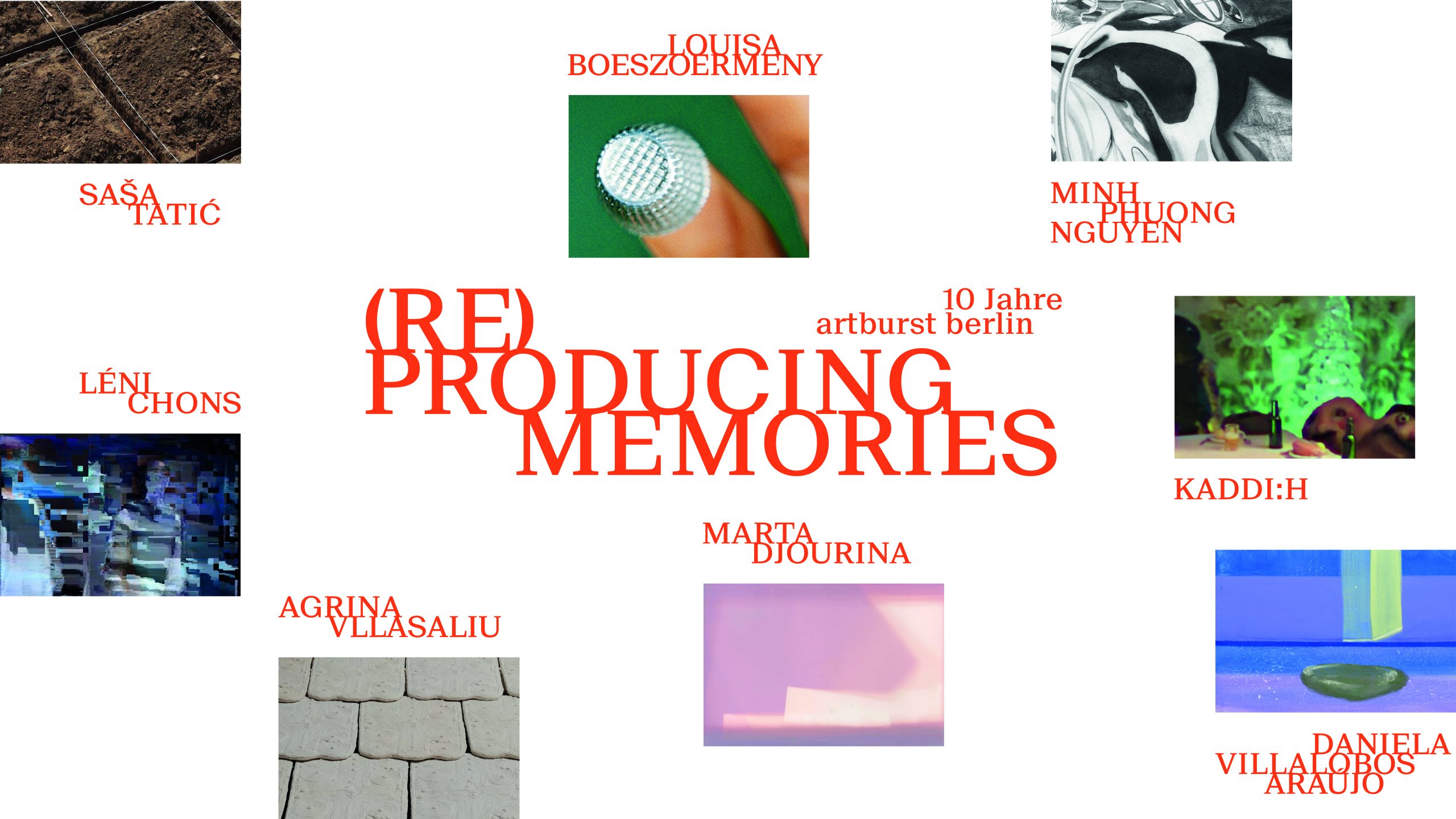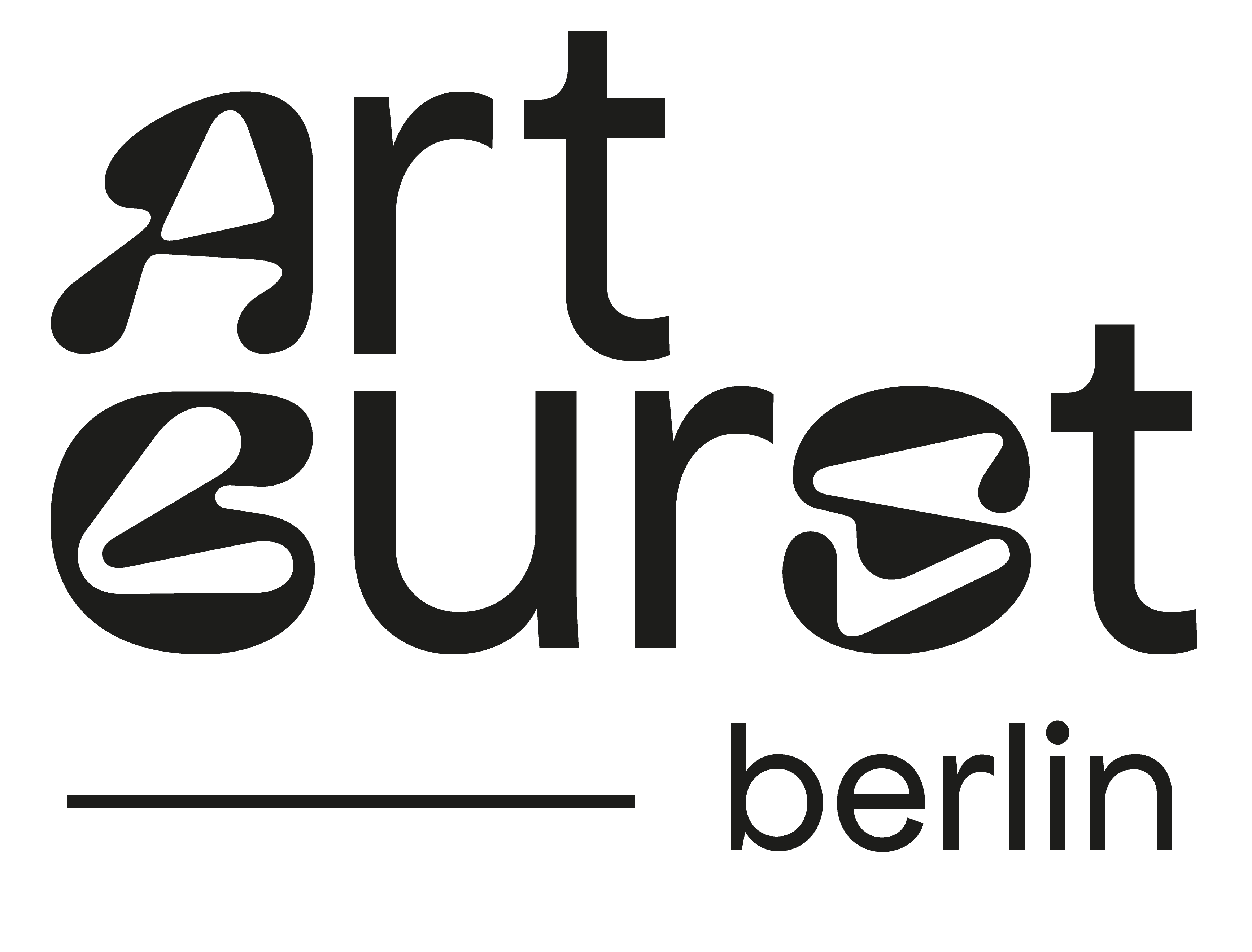
Location
Kiezraum Dragonerareal
Mehringdamm
10963 Berlin
Date
21. – 24. September 2023
Program
Opening hours : Friday - Sunday 12 - 9 p.m.
Vernissage : 21.09.2023 from 7 p.m.
Guided tour : 22.09.2023, 7 p.m.
Guided tour for blind people and people with visual impairments : 23.09.2023, 6 p.m.
Memory collage workshop : 24.09.2023, 3 p.m.
Artists
Louisa Boeszoermeny
Léni Chons
Marta Djourina
Kaddi:H
Minh Phuong Nguyen
Saša Tatić
Daniela Villalobos Araújo
Agrina Vllasaliu
In view of our 10th anniversary, we look into the future as well as the past through this year‘s corresponding exhibitions.
Louisa Boeszoermeny‘s series The Nearness of Things explores, but never quite fathoms, our subconscious . She thereby examines how repressed memories affect our present. In Weißes Rauschen in diskreter Zeit Léni Chons addresses the inevitable fading and changing of memories over time. Her prints thereby form an analogy to our fragmentary memory. Marta Djourina also examines and questions the documentary character of photographs. In her work Von: Mir /An: Mich II the time between two moments is captured on photographic paper in an abstract form. In #wearefamily Kaddi:H reflects on childhood memories from an adult perspective. Childish perceptions are questioned and connections to today‘s family relationships are revealed. In Minh Phuong Nguyen‘s work, memories are visualised in their transience. Endlessknot type beat II zeigt den Prozess des Verschwimmens verschiedener Erinnerungen miteinander, wobei Erinnerungsfetzen und -lücken gleichermaßen dargestellt werden. Dabei rücken besonders identitätsstiftende Fragen und Verflechtungen, die ihre Herkunft und ihr Aufwachsen betreffen, in den Fokus. Fragen um Herkunft tun sich auch in Saša Tatićs The Bedrock are highlighted and one‘s own family history is examined. Daniela Villalobos La casa en la que habito III is equally dedicated to holding on to memories, while they also hold on to us. The mnemonic reconstruction of her grandparents‘ house raises the question of the relation between reality and memories. With Rozafa was never here Agrina Vllasaliu creates a discussion about cultural heritage and collective memories. Using the Albanian saga of Rozafa, she reflects on the writing of history, the customs and traditions with which we identify, and the extent to which these are shaped by female narratives.

Saša Tatić, The Bedrock, Performance Action/HD Video, 88’55“, 60x40cm, 2017

Louisa Boeszoermeny, Hypnosis I, aus der Serie: The Nearness of Things, Digitale Ausbelichtung, 40x60cm, 2019–ongoing

Kaddi:H, #wearefamily, Fünf Videos (07:06min), 2023

Minh Phuong Nguyen, Bleistift auf Papier, 42×59,4cm (endlessknot type beat, 2022), Metall, Glas, Rahmenklammern, Satin-Anhänger, 66,5×41,5×60 cm, 2023

Daniela Villalobos Araújo, La casa en la que habito III, Acryl, Sprühfarbe und Kohle auf Leinen,
350x450cm, 2022
Marta Djourina, Von: Mir /An: Mich II, 160 Stück per Post als Postkarten verschickt, Briefmarken, Notizen, Adressaufkleber, belichtetes Fotopapier, Einzelstücke, 18x13cm, 2016, Ausstellungsfotos: Radostin Sedevchev

Agrina Vllasaliu, Rozafa Was Never Here, Ton, Holz, Soundbox, 2022, Artist of Tomorrow 2022 Finalisten Ausstellung, Ort: Stacion–Zentrum für zeitgenössische Kunst Prishtina, Foto: Alban Nuhiu

Léni Chons, kreisen, Fotodruck, 69,10×86,40cm, 2023
